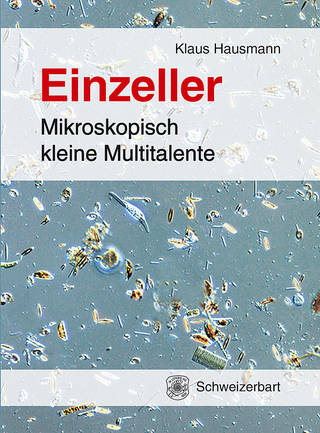
Preservation of Cells
Wiley-Blackwell (Verlag)
978-1-118-98984-5 (ISBN)
This book provides readers with the tools needed to develop or debug a preservation protocol for cells. The core structure and content of the text grew from a professional short course that has been offered at the Biopreservation Core Resource for the last 10 years. This comprehensive text describes, step by step, the individual elements of a protocol, including the relevant scientific principles for each phase of the protocol. It can be used by anyone who is involved in cell preservation—even by those who are not experts in freezing of cells—because it provides the scientific basis for those that want to understand the basis for the protocol.
Preservation of Cells: A Practical Manual begins by first introducing readers to the subject of preserving cells. It then goes on to cover Pre-freeze Processing and Characterization; Formulation and Introduction of Cryopreservation Solutions; Freezing Protocols; Storage and Shipping of Frozen Cells; Thawing and Post Thaw Processing; Post-thaw Assessment; and Algorithm-driven Protocol Optimization.
Clearly explains the reasons behind every step in the development of a preservation protocol and the scientific principles behind them
Provides alternative modes of preservation for when conventional methods of cryopreservation are not appropriate for a given cell type or application
Enables more organization to achieve improved post thaw recoveries and process consistency
Preservation of Cells: A Practical Manual is an important book for researchers, laboratory technicians and students in cell biology, stem cell biology, tissue engineering, and regenerative medicine. It is also useful to cell bankers, regenerative medicine, biomarker discovery or precision medicine companies, and cell therapy labs, blood bankers, biobankers, and biotechnology companies.
ALLISON HUBEL is a Professor of Mechanical Engineering and the Director of BioCoR (Biopreservation Core Resource) at the University of Minnesota, USA.
Preface xiii
Acknowledgments xvii
Nomenclature xix
1 Introduction 1
Mammalian Cells: Modern Workhorses 1
Products from Cells 1
Cells as Therapeutic Agents 2
Biomarkers for Health or Disease 2
In Vitro Models 3
Bridging the Gap 3
The Preservation Toolkit 5
Hypothermic Storage 5
Cryopreservation 6
Vitrification 7
Dry State Storage 8
Fit]for]Purpose 8
One Size Does Not Fit All 9
The Process is the Product 9
Reproducibility 12
Safety 12
Dispelling the Myth of the Cold Black Box 12
References 13
2 Pre]freeze Processing and Characterization 15
Pre]freeze Processing 15
Digestion of Cells from Intact Tissue 15
Hypothermic Storage 16
Selection of Subpopulations 17
Activation or Stimulation 18
Genetic Modification 18
Culture 19
Pre]freeze Process Monitoring 19
Pre]freeze Characterization 20
Identity 20
Genetic Stability 21
Enumeration 21
Purity 22
Adventitious Agents 22
Microbial Testing of Cell Therapy Products 23
Special Considerations for the Characterization of Cell Therapies 24
Annotation of Pre]freeze Processing 24
Scientific Principles 25
Putting Principles into Action 25
References 26
3 Formulation and Introduction of Cryopreservation Solutions 29
Importance of Cryoprotective Agents 29
Mechanisms of Cryoprotection 31
Formulating a Cryopreservation Solution 31
Formulation of a Vitrification Solution 33
Characterization and Quality Control for Cryoprotective Solutions 34
Toxicity of CPAs 35
Osmotic Toxicity 35
Biochemical Toxicity 36
Developing a Protocol for Introducing CPA Solutions 37
The Basic Experiment 37
Introduction of Vitrification Solutions 38
Cell Concentration 39
Removal of CPA Solution 40
Safety Considerations for Cryopreservation Solutions 40
Cryopreservation Containers 41
Overwraps 42
Labeling 43
Sample Annotation 44
Scientific Principles 44
Putting Principles into Practice 44
References 44
4 Freezing Protocols 47
Importance of Cooling Rate 47
Controlled]rate Freezing 48
Controlled Cooling]rate Protocols 49
Segment 1: Initial Hold Period 49
Segment 2: Cooling 50
Uncontrolled Nucleation 53
Manual Nucleation 54
Automatic Nucleation 54
Verifying Segment 2 (Including S2a) 55
“Delayed” Latent Heat 55
Segment 3 56
Verifying Segment 3 56
Other Types of Controlled]rate Protocols 57
Passive Freezing 57
Transfer to Storage 59
Vitrification 60
Independent Temperature Measurement 60
Scientific Principles 61
Putting Principles into Practice 62
References 62
5 Storage and Shipping of Frozen Cells 65
Scientific Basis for Selection of a Storage Temperature 65
Additional Considerations for Vitrified Samples 67
Standards, Guidelines, and Best Practices 67
Facilities 68
Storage Equipment and Environment 69
Mapping Storage Devices and Setting Alarm Limits 70
Monitoring Systems 71
Safety 71
Inventory Management System 72
Stability in Storage 72
Temperature Fluctuations 73
Influence of Background Ionizing Radiation on Stability in Storage 74
Shelf]Life of Samples in Storage 75
Fit]for]Purpose Storage Practices 75
Risk Mitigation in Long]Term Storage 76
Shipping or Transport of Cells 76
General Shipping Considerations 77
Liquid Nitrogen Dry Shippers 78
Temperature Mapping of a Shipper 79
Packaging of Samples Being Shipped 79
Monitoring of Shipments 79
Responsibilities 79
Sample Annotation 80
Scientific Principles 80
Putting Principles into Practice 81
References 81
6 Thawing and Post]Thaw Processing 85
Thawing
Equipment 86
Transporting Samples Prior to Thawing 87
Estimating Your Thawing Rate 87
Thawing and Infusion of Cell Therapy Products 89
Safety Considerations for Thawing 90
Post]Thaw Processing 90
Post]Thaw Washing 90
Dilution 91
Infusion of Cells Immediately Post]Thaw 91
Removal of Vitrification Solutions 92
Wash Solutions 92
Scientific Principles 94
Putting Principles into Practice 94
References 94
7 Post]Thaw Assessment 97
Common Measures Used in Post]Thaw Assessment 98
Physical Integrity 98
Metabolic Activity 99
Mechanical Activity 100
Mitotic Activity 101
Differentiation Potential 102
Transplantation Potential 103
Strategies to Improve the Accuracy and Reproducibility of Post]Thaw
Assessment 103
Eliminate Measurement Bias 103
Compensating for Post]Thaw Apoptosis 105
Post]Thaw Assessment Using a Single Measure 106
Optical Methods of Post]Thaw Assessment 106
Release Criteria 107
Scientific Principles 107
Putting Principles into Practice 107
References 108
8 Algorithm]Driven Protocol Optimization 111
Small Cell Number/High Throughput Approach 113
Validating Operation of the Algorithm 114
Flexibility 115
Practical
Notes 115
Modeling
in Cryobiology 115
References 116
Protocols Introduction 117
Protocol
Contributors 118
Cryopreservation of Endothelial Cells in Suspension 119
Principle 119
Equipment and Supplies 119
Equipment 119
Supplies 120
Safety 120
Procedure 121
Cell Preparation 121
Preparation of Cryoprotectant Solution 121
Using Powdered HES 122
Using Pentastarch Solution 122
Cryoprotectant Addition 122
Freezing 122
Controlled]rate Freezing with a Methanol Bath 122
Alternative Freezing Procedure 123
Thawing 123
Expected Results 123
References 123
Cryopreservation of Peripheral Blood Mononuclear Cells from Whole Blood 125
Principle 125
Protocol 1: Isolation of PBMCS Directly over Ficoll]Hypaque 125
Equipment 125
Materials 126
Reagents 126
Procedure 126
Protocol 2: Isolation of PBMCS Using SepMates 127
Equipment 127
Materials 128
Reagents 128
Procedure 128
Appendix A Human Serum AB Freezing Media 129
Materials 129
Equipment 130
Reagents 130
Procedure 130
Cryopreservation of Human Adipose Stem Cells 131
Principle 131
Equipment and Supplies 131
Reagents and Media 132
Procedure 133
Isolation of Human ASCs from Lipoaspirate 133
Magnetic Cell Sorting (Optional) 135
Cryopreservation 135
Controlled]rate Freezing of Human ASCs 135
Thawing Human ASCs 137
Notes 138
Reference 139
Cryopreservation of Red Blood Cells 141
Method I: High Glycerol/Slow Cooling Technique (Meryman and Hornblower 1972) 141
Preparation of the RBC Concentrate 141
Addition of the Cryoprotective Solution 141
Cooling 142
Rewarming 142
Removal of the Cryoprotectant and Debris 142
Method II: A Low Glycerol/Rapid Cooling Technique (Rowe, Eyster, and Kellner 1968) 143
Method III: Hydroxyethylstarch/Rapid Cooling Technique (Sputtek 2007) 144
References 146
Cryopreservation of Oocytes by Slow Freezing 147
Principle 147
Specimen Requirements 147
Equipment and Supplies Needed 147
Equipment 147
Supplies 148
Procedure 148
Safety 152
Calculations 152
Reporting Results 152
Procedure Notes 153
Limitations of Procedure 153
Oocyte Vitrification and Warming 155
Principle 155
Equipment and Supplies 155
Equipment 155
Supplies 155
Procedure 156
Quality Control 160
Safety 161
Transportation of Hematopoietic Progenitor Cells and Other Cellular Products 163
Principle/Rationale 163
Specimen 163
Equipment/Reagents 163
Quality Control 164
Procedure 164
Additional Information 165
Further Reading 165
Cryopreservation of Hematopoietic Progenitor Cells 167
Principle/Rationale 167
Protocol/Processing Schema 168
Specimen 168
Equipment/Reagents 168
QualityControl 169
Procedure169
Appendix A Alternate Cryopreservation
Harness Set]2 or 4 Bags 173
Further Reading 173
Thawing of Hematopoietic Progenitor Cells 175
Principle/Rationale 175
Equipment/Reagents 175
QualityControl 176
Procedure176
Further Reading 177
Processing and Cryopreservation of T]Cells 179
Principle/Rationale 179
Protocol/Processing Schema: N/A 179
Specimens179
Equipment/Reagents 179
Quality Control 180
Procedure 180
Further Reading 182
Thawing and Reinfusion of Cryopreserved T]Cells 183
Principle/Rationale 183
Protocol/Processing Schema 183
Specimen 184
Equipment/Reagents 184
Quality Control 184
Procedure 184
Further Reading 187
Index 189
| Erscheinungsdatum | 13.02.2018 |
|---|---|
| Verlagsort | Hoboken |
| Sprache | englisch |
| Maße | 158 x 231 mm |
| Gewicht | 408 g |
| Themenwelt | Naturwissenschaften ► Biologie ► Zellbiologie |
| ISBN-10 | 1-118-98984-8 / 1118989848 |
| ISBN-13 | 978-1-118-98984-5 / 9781118989845 |
| Zustand | Neuware |
| Informationen gemäß Produktsicherheitsverordnung (GPSR) | |
| Haben Sie eine Frage zum Produkt? |
aus dem Bereich

